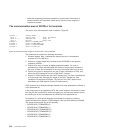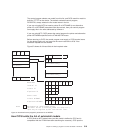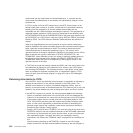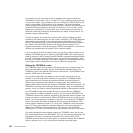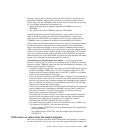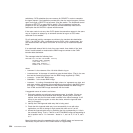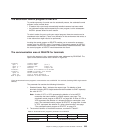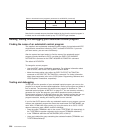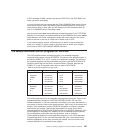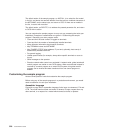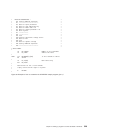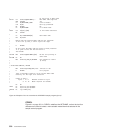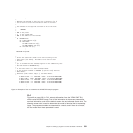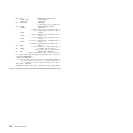
The autoinstall control program at DELETE
To provide symmetry of control over the autoinstall process, the autoinstall control
program is also invoked when:
v A session with a previously automatically-installed resource has been ended
v An autoinstall request was accepted by the user program, but the subsequent
INSTALL process failed for some reason.
To make it easier for you to write your control program, these two events can be
considered to be identical. (There is no difference in the environment that exists, or
in the actions that might need to be performed.)
Invoking the control program at DELETE enables you to reverse the processes
carried out at the INSTALL event. For example, if the control program at INSTALL
incremented a count of the total number of automatically installed resources, then
the control program at DELETE would decrement that count.
The communication area at DELETE for terminals
Input to the program is via a communication area, addressed by DFHEICAP. The
layout of the communication area is shown in Figure 38.
The parameter list contains the following information:
1. Standard Header. Byte 1 indicates the request type. For deletion of local
terminals (including APPC single-session devices installed via CINIT requests)
the value is X'F1'.
Note: A value of X'F5' or X'F6' represents the deletion of a local APPC
connection that was installed by a BIND request—see page “The
autoinstall control program at DELETE” on page 549. A value of X'FA' or
X'FB' represents the deletion of a shipped terminal or connection—see
page “The autoinstall control program at DELETE” on page 564. A value
of X'FC' represents the deletion of a client virtual terminal—see page
“The autoinstall control program at DELETE” on page 575.
2. The terminal identifier of the deleted resource, as shown in Table 27.
Table 27. Autoinstall control program’s parameter list at DELETE
1st byte 2nd byte 3rd byte 4th byte
First fullword "F1" "Z" "C" Reserved
Second fullword ID of terminal to be deleted
Fullword 1 Standard Header
Byte 1 Function Code (X’F1’)
Bytes2-3 Component Code Always ’ZC’
Byte 4 Reserved Always X’00’
Fullword 2 Terminal ID of terminal to be deleted
Fullword 3 NETNAME of terminal to be deleted
Bytes 1-2 Delete netname length
Bytes 3-4 Start of Delete netname ID
Next 15 bytes Remainder of Delete netname ID
Figure 38. Autoinstall control program’s communication area at DELETE. For terminals (including APPC single-session
devices).
Chapter 10. Writing a program to control autoinstall of terminals 525




